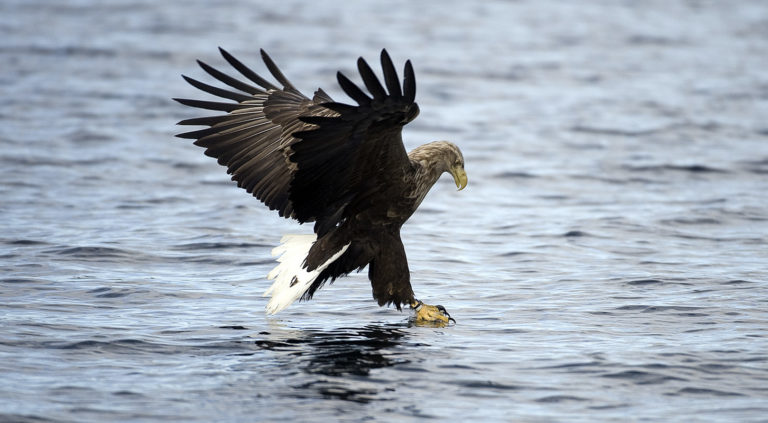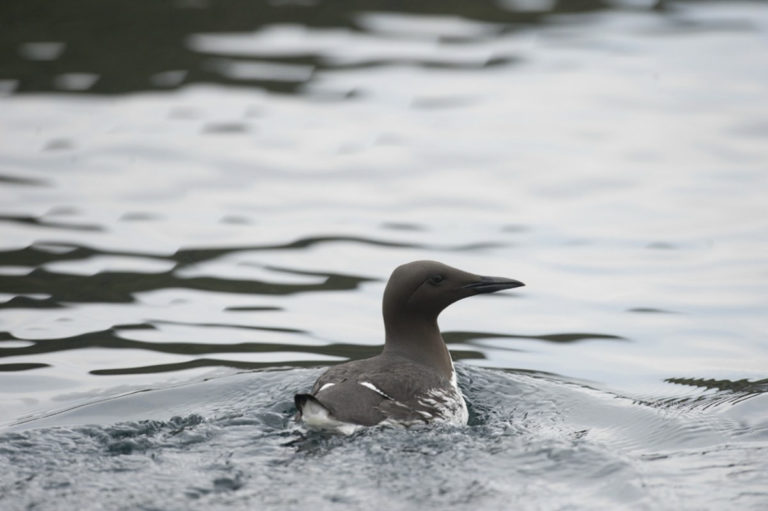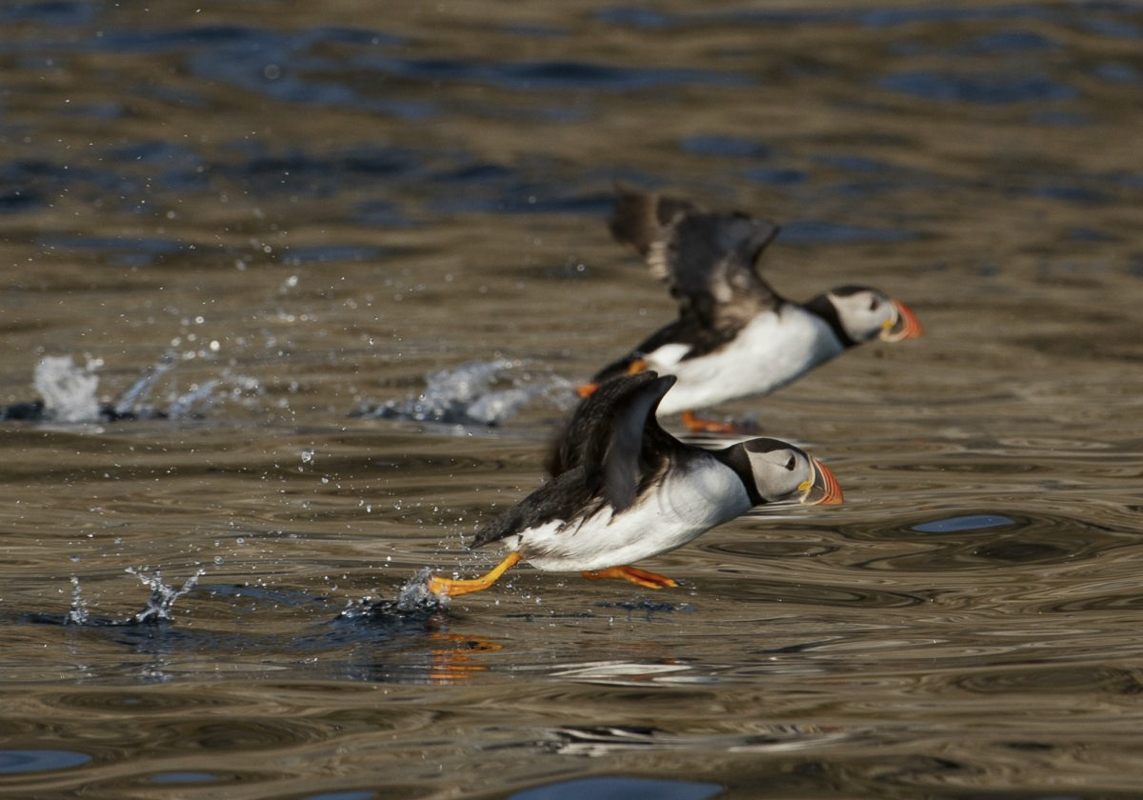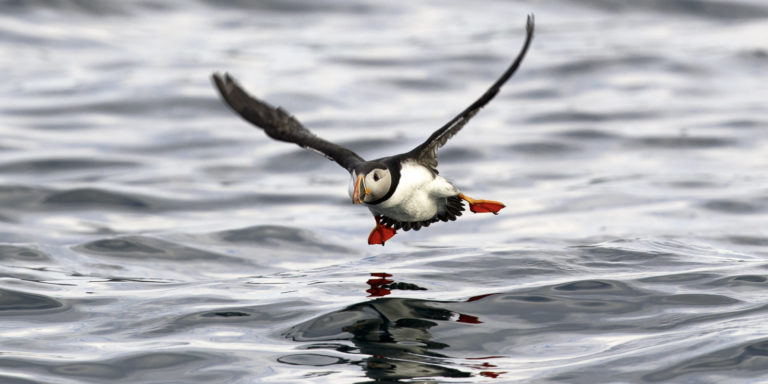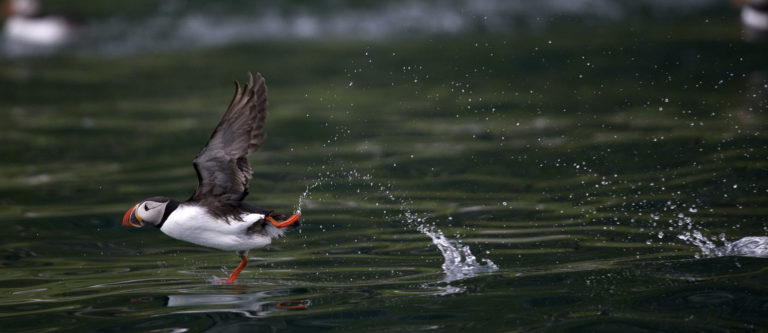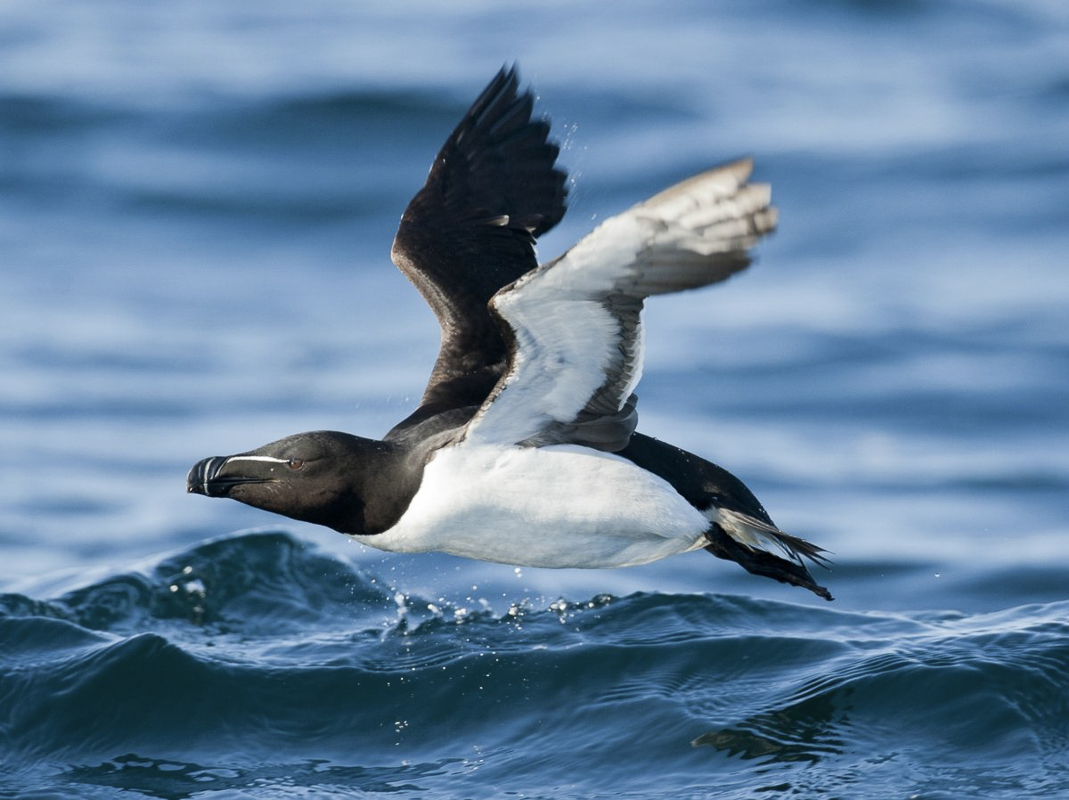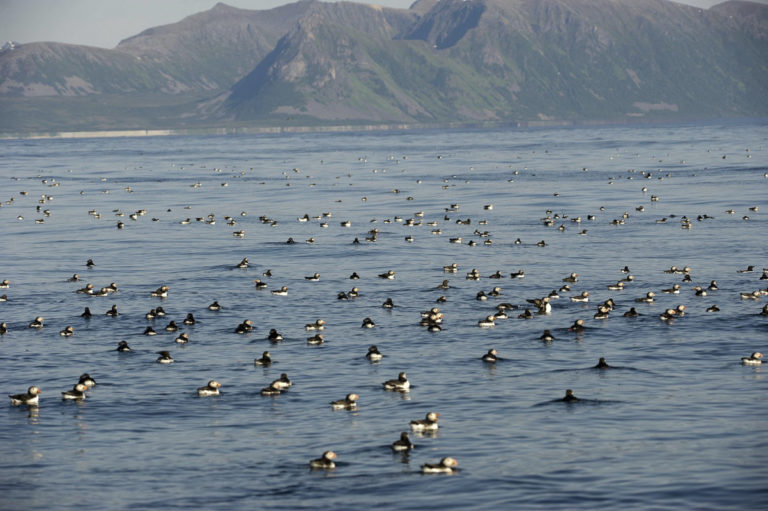80,000 puffin pairs, white-tailed eagles, kittiwakes, cormorants and arctic skuas, not to mention seals on the reefs; life in the sea off Andøya Island is plentiful.
80,000 puffin pairs, white-tailed eagles, kittiwakes, cormorants and arctic skuas, not to mention seals on the reefs; life in the sea off Andøya Island is plentiful. Sea Safari Andenes will show you the amazing offshore wildlife.
How can I get to Bleiksøya to see the birds?
This is an uninhabited island off Andøya Island in the archipelago of Vesterålen. Bleik is the nearest village, and Andenes town with hotels and an airport is nearby.
Sea Safari Andenes runs a tour there in the nesting season.
A little rain and wind doesn’t stop a tour. However, certain wind directions can make the tour be cancelled. Make sure to have a flexible programme when touring the Vesterålen Islands. Maybe you can go tomorrow instead?
Visit Vesterålen is the best source for information on these green islands
Bleiksøya is a cone out at sea
Bleiksøya Island towers 160 metres (525 feet) out of the sea about a kilometre (0.6 miles) offshore from the fishing village of Bleik and is almost perfectly cone-shaped. Safe from predators on land, several hundred thousand sea birds breed here every summer. Sea Safari Andenes takes guests on daily trips to the island during the breeding season in the summer.
Puffins are the most numerous
The most numerous of the birds out on Bleiksøya Island is the puffin. Around 80,000 breeding pairs come to Bleik every year, arriving on 14 April and departing on 10 August. These dates remain virtually unchanged from one year to the next, only varying by a day or two in some years. “I can’t believe they’re so tiny” whispers someone in the boat; puffins may be tiny seabirds, but they have a stout body and those small wings have to work hard to keep the bird in the air. They are most often seen in the troughs between waves as they hunt for fish, often with a beak full of whitebait, particularly in the late summer.
Seals and orcas are offshore
The reefs around Bleiksøya Island are also home to seal whelping grounds. The grey seal and the harbour seal are the most numerous species. They spend their lives out at sea, but they have to come ashore to give birth. They seek out the most inaccessible reefs, where they are safe from predators and they can be seen as they bask on the shore. Yet the most voracious predator is to be found in the sea. Orcas, or killer whales, which have been particularly numerous off the coast of Vesterålen in recent years, represent a threat to the seal pups.
Many types of birds nest on Bleiksøya
Another very numerous species is the kittiwake, a small species of gull which breeds in colonies along the coast. Cormorants, both the great cormorant and the elegant common shag, can be found on the reefs surrounding Bleiksøya Island itself. Black, tall and elegant, they stand in lines, and looking at them it is not hard to understand why the cormorant is a mythical bird in North Norwegian folk legend.
The gannets struggle to take off
The largest seabird is the gannet. Gannets are large white birds with yellowish heads and a wingspan of almost two metres (6 feet 6 inches). They dive steeply down into the sea from heights of up to 100 metres (330 feet) and can take relatively large fish in their big beaks. However, the gannets’ weakness lies in taking off and they can often be seen looking rather comical as they clumsily attempt to take off. The fulmar is a petrel, which looks like a muscular gull.
Arctic skuas are real bullies
Bullies can be found everywhere, even on bird cliffs. Arctic skuas don’t fish for themselves, they steal from other birds. They swoop in to attack puffins from below, crashing into the puffin’s chest. This causes the puffin to release the food in its beak, and the skua immediately snaps it up. The skua is a master of the skies and the puffin stands little chance of resisting.
Two puffins a day keep the doctor away
High above the bird cliffs soar white-tailed eagles with a watchful look. During the summer, puffins are their main prey, and the eagles eat an average of two a day. This gives them plenty of time to fly high above the bird cliffs, spreading fear amongst the birds perched on the cliff. If you are lucky, and the puffins not so lucky, you will see how quickly the eagles swoop down and snatch a puffin in mid-air as it heads back to its nest.
Sorry, you’ll miss the storm petrel
Razorbill and common and black guillemot are auks that breed in smaller numbers on Bleiksøya Island. One bird you won’t see is the storm petrel. This is a petrel which breeds during the autumn. At this time of year, storm petrels fish out at sea all day long and do not return to their nest until after nightfall, thereby avoiding the white-tailed eagles.
How do you go out there?
During the breeding season, Sea Safari Andenes runs excursions by RIB from the harbour in Andenes. RIBs are rubber boats with a keel, which makes them stable in the water. Before you head out to sea, you will be given a briefing by Sea Safari Andenes, who will tell you which seabirds you will see and what you should look out for. This talk will be given by a marine biologist, so feel free to ask any questions you may have. Bird safaris may be cancelled due to the weather, but this is much less common than in the case of whale safaris, as they take place closer to the shore and involve shorter distances.

Inform yourself on bird watching in Vesterålen
Book your tour and get good Vesterålen information

